Gary Smith
 2003 Interview by Mark J. Iskowitz (posted here with his permission)
2003 Interview by Mark J. Iskowitz (posted here with his permission)
Streisand fans might recognize Gary Smith as the younger, producer half of Smith-Hemion Productions, one of television’s most creative, lauded, and enduring partnerships. For 30+ years, Smith and his partner, director Dwight Hemion, who directed My Name Is Barbra and Color Me Barbra and whom Smith describes as having “the best eye in the business,” presented countless memorable TV productions with the finest entertainers of our time, earning 24 Emmy Awards between them. Currently, Smith executive produces special programs for television, such as the AFI Life Achievement Award tribute to Barbra (2001) and 53rd Emmy Awards which also featured Barbra (2001). In this exclusive interview originally published in Just Like Buttah (issue #11, May 1997), Gary Smith (GS) and I (MJI), both Carnegie Mellon University alumni, discuss Smith’s seven major TV productions with Barbra Streisand from 1963 to 1994. - Mark Iskowitz
THE JUDY GARLAND SHOW

MJI: At Carnegie Mellon you studied theater and art direction. What brought you to television?
GS: When I graduated Tech [then known as Carnegie Tech] in 1956, I took the extensive exam to get into the scenic designers' union. I passed and immediately got a job at CBS when TV was just blossoming.
MJI: When did you first meet Barbra Streisand, and what was your first impression?
GS: The first time I actually met and worked with Barbra was on The Judy Garland Show in 1963. My (and just about everyone’s) first impression was that we knew we were meeting someone who would become an enormous star. She just had that very special quality and sound.
MJI: Did you establish a rapport or friendship with her at that point or later on?
GS: Not really a friendship at that time; it wasn’t exactly the most comfortable working experience, although it turned out on TV as something quite remarkable. Barbra and Judy performed the duet, now fairly famous as part of TV history, arranged by Mel Torme. The joining of “Happy Days Are Here Again” and “Get Happy” was obviously a clever use of each of their known songs that Mel put together very beautifully.
THE BURT BACHARACH SPECIAL
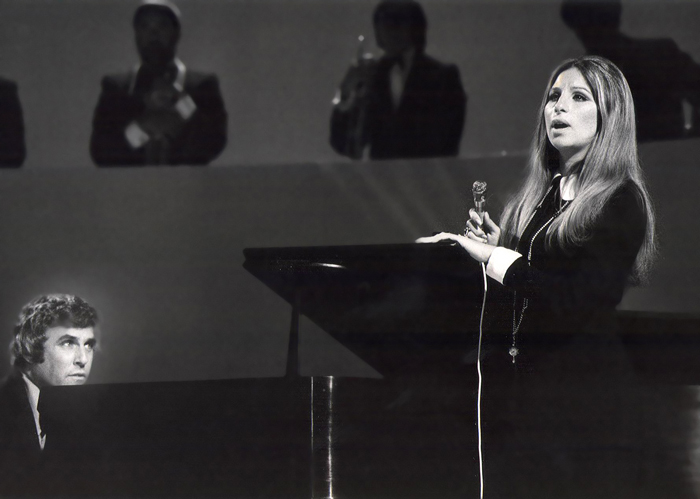
MJI: Smith-Hemion's first TV special really featuring Barbra (apart from a brief live remote in 1968) was actually the March 1971 Singer Presents Burt Bacharach special, where Barbra guested and sang three songs, including a gem called "Be Aware." Did you and Dwight influence the guest list for this show, or was it solely Burt's choice?
GS: Singer Presents Burt Bacharach was really an unusual situation. I recall that Barbra, who was playing tennis at the time, and Burt had occasion to meet on the court. I think I was there at the time, and we discussed Burt writing a new song that Barbra could premiere on his special. In addition, she also did the “One Less Bell”/"House Is Not A Home" medley that Dwight presented with multiple images and some of the best lighting ever seen. Our lighting designer, John Rook, was someone we met in London when we were doing work there. He lit just about all of Barbra’s TV specials, but John died just a few months ago. We miss him both personally and creatively.
MJI: The "One Less Bell" medley—gorgeous work by Rook and Dwight. This Bacharach special was produced in L.A., correct?
GS: Barbra’s segments were produced in L.A., the Tom Jones segment in London, the Nureyev segment in New York.
OTHER MUSICAL INSTRUMENTS
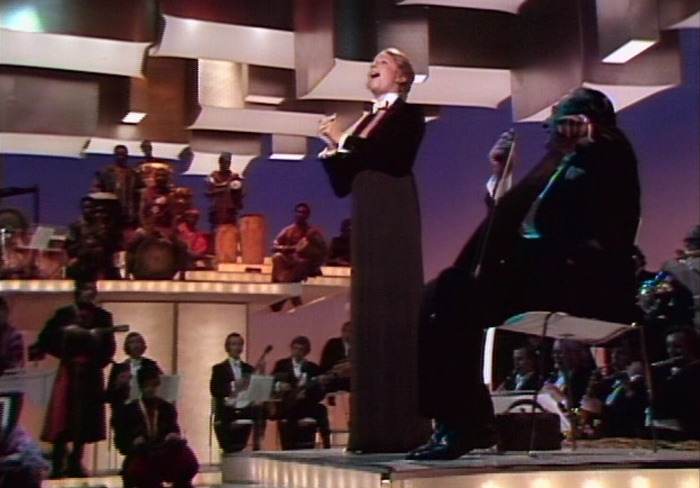
MJI: How did Barbra's 5th TV special and first true Smith-Hemion production for her, Barbra Streisand And Other Musical Instruments (1973) develop, and how did you get involved?
GS: Other Instruments was done in London when Marty [Erlichman, Barbra's manager] called us regarding Barbra’s desire to do another big CBS special. We probably talked her into coming to London where the facilities were great. The trip would be fun, the lighting director, John Rook, was brilliant, so she came. I think that concept might have been developed by us with Joe Layton and the Welches (Ken & Mitzie).
MJI: Did CBS push for this one last special in order to release her from contract?
GS: Not to my knowledge.
MJI: Were the long hours of taping at Elstree Studios near London in July '73 any more lengthy or grueling than for other Smith-Hemion specials of that era, or is it blown out of proportion because "it's Barbra"?
GS: All of Barbra’s TV work demands long and arduous hours. There are no short cuts or one-take items. The hours are long, because she gets so totally involved in making each take better. Nothing comes casually; it is always analyzed, questioned, and re-analyzed. But that simply comes with the Barbra Streisand territory.
MJI: How much of the show was performed with an audience?
GS: None, unless you consider a camel and a saw player an audience.
MJI: What is your favorite moment from this very visual show, since your professional origins are in art direction?
GS: Oddly enough, my favorite moment in that show is Barbra with Ray Charles. Because of Ray, it was taped fairly quickly, very few takes. I like seeing Barbra with other artists. There’s a bit more vulnerability and less personal involvement, more sharing. I like that.
MJI: Fans really enjoy Instruments. What has kept it from home video all these years?
GS: I have to assume that it is owned by ITC, the London company that produced it, and Marty has not yet been able to negotiate the video rights for it. I'm actually not sure. [Note: “Instruments” and all the other Streisand TV specials were released on DVD in 2005.]
MJI: Are you proud of the show?
GS: Yes, very proud. The show has an extraordinary look to it. The variety of sounds and images was very unique. And, of course, our memory of Joe Layton is still very strong. Actually, it’s Joe playing the Japanese musician in that intimate solo.
FUNNY GIRL TO FUNNY LADY
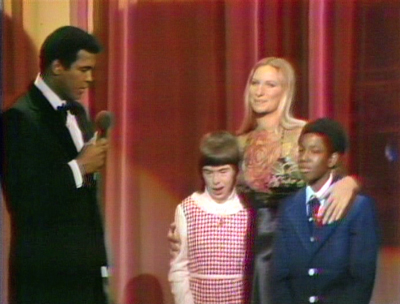
MJI: Less than two years later, you helped bring Barbra back to TV with a benefit special called Funny Girl to Funny Lady with its live mini-concert from the Kennedy Center. What is your recollection of this show, and was Barbra really disappointed that the show promoted Funny Lady?
GS: This may take a while. That show was incredible in that, knowing how nervous Barbra was (and still is) performing live to an audience, we really had no idea how this stuffy, black tie, high-price ticket, charity audience would respond to Barbra. We had not anticipated the absolutely incredible and lengthy audience response. It also didn’t help that President Ford, who was to only speak for two minutes at the beginning, talked much more than that. That meant that this live show would run way past the hour allocated. I think she actually ended up cutting a song she was to dedicate to Muhammad Ali as the finale. It might have been “People,” but I don’t exactly remember. I know it probably changed, to a degree, her feelings about singing live to an audience. She was really blown away by that audience response.
ONE VOICE
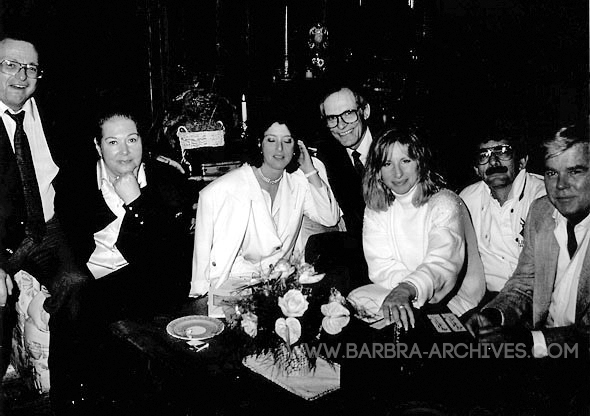
MJI: Why didn't you work with Barbra for so many years until One Voice reunited you?
GS: My feeling is that Barbra was interested in new challenges, and film was that, both as a performer and director. Remember each film project can take up about a year, if not more, of your time. Were there many albums during those years?
MJI: Yes, actually, she continued with one album a year through the end of the ‘80s. Were there any TV projects involving you and Barbra, which never went beyond the talking or planning stages?
GS: Nothing extremely tangible. However, we always wanted to do Brooklyn, might have talked about it a bit, but nothing has come of it. It’s just so connected to our business. So many performers came from there, kind of a sociological phenomenon—Danny Kaye, Jackie Gleason, it's really a huge list that doesn’t come to mind right now. There was also a time when Barbra and Elvis together was talked about, but again, I'm not sure why that was never done.
MJI: In 1986, you produced One Voice for TV, assembling 500 people on Barbra's former Malibu ranch. What can you tell me about putting this very special show together?
GS: It started with meetings with Marilyn Bergman, who was very involved with the Hollywood Women’s Political Committee (HWPC), and they had convinced Barbra to do a fund-raiser for the six Democratic Senatorial candidates running in various elections around the country. I think she was going to do it at Dodger Stadium, but then actually realized that as much money could be raised by creating a private event at the ranch and charging $5,000 per couple to a dinner and concert. She got Wolfgang Puck (Spago) to donate all the food, invited Barbara Jordan and Sen. Alan Cranston, as well as many Hollywood celebrities to the event. She prepared a very unique program of songs applicable to various themes, all relating to improving the human condition and decided to use a very small group of musicians for a more intimate, personal concert. We all had agreed to work on this as part of the charity, meaning no fee. However, just a few weeks before the event, Barbra decided that many people would want to see this concert, and why not make it available to the public. At that time, Marty took it to CBS and maybe the other networks, and they passed on it. He then went to HBO, with the proviso that if Barbra didn’t like the outcome of the taping of the concert, she could ask them not to air it, and they’d be out the $300,000 they had put up for the additional TV taping costs. There was a late-night meeting the night before or after the dress rehearsal. Some minor changes took place between those two nights. You have to realize that much of Barbra’s talk had been pretty political in its content, and we had to do alternate introductions, less pointed to fundraising for the Democrats, for the HBO version. Right after the actual concert, there was a midnight meeting/screening, where Barbra had to be convinced by everyone that it was really great, even though there were a few minor lighting flaws that could be fixed. Eventually, she okayed the broadcast. For my money, it was one of the most emotional and incredible events of its kind ever done. She sounded great, looked wonderful, and the added connection of having Barbara Jordan in the front row really got to her. She was terrific. Robin Williams wasn’t half-bad either.
MJI: Has CBS ever expressed regret to you or Barbra about passing up One Voice?
GS: No, but Michael Fuchs, then head of HBO, was quite proud to have made the gutsy decision to approve $300,000 on the chance that it could go down the drain.
1993 PRESIDENTIAL INAUGURAL GALA
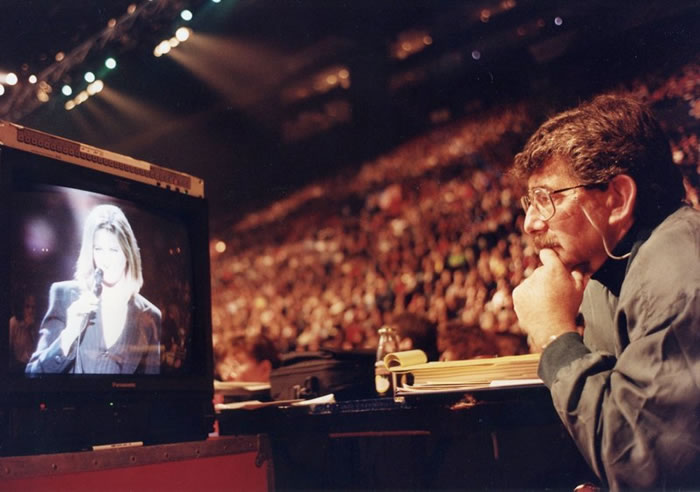
MJI: You and Dwight produced the 52nd Presidential Inaugural Gala in 1993, with Barbra's return to the concert stage on TV. She sang three songs and introduced President Clinton. Would you share some of your memories of that magical evening?
GS: I do remember that Barbra was the first person I called to be on the Gala. Saying that to her and also asking her to introduce the President prompted an immediate “Yes.” This was a key booking for that event, since knowing that Barbra was going to appear prompted most other performers to also agree. She was clearly the highlight of the show. At the very last minute, Michael Jackson called and asked to appear, and could he introduce the President, or certainly close the show. I had to indicate that it was too late, but as it turned out, he came aboard anyway. Little did I know that I would be involved shortly after in an enormous lawsuit against him and the Jackson family for the debacle called The Jackson Family Honors, which is still unresolved. Barbra needed a lot of attention during the rehearsals of the Gala. For instance, we would tape rehearsals for her and give her an opportunity to look at them each night. Many rehearsal hours took place over a period of three days. Also, deciding on wardrobe was a big item.
MJI: Did she rehearse only at the arena or in a studio as well?
GS: She’d rehearse at the arena but also attended the orchestra rehearsals off-site at a recording studio. There were originally to be four songs, but we cut one.
MJI: "Some Enchanted Evening,” which Barbra only performed at the American Gala dress rehearsal the night before. Although she was a huge success at the Gala and continues her support of and friendship with the President, Barbra didn't appear at Clinton's second Inaugural Gala special, which you also produced. To put the ridiculous speculation to rest, would you please explain what happened?
GS: I'm really not sure what the reason is for Barbra not appearing on this year’s Gala. There’s all kinds of speculation—not being given permission to sleep in the Lincoln Bedroom at The White House was one of the more absurd reasons, although I have no knowledge about its veracity.
MJI: Were you ever in negotiations with Barbra to appear on the show? Four years ago, you called her first. What happened this year?
GS: Yes, there were conversations regarding her appearance, of course. They went on for some time. Not getting an answer was the real frustration. Finally, just a week or so before the event, Marty called me to say that Barbra wasn’t going to make it. I really didn’t care why. In my opinion, and speaking purely as someone responsible for creating and producing this year’s event for the President, I'm not sure that Barbra’s appearance would have necessarily been the best for her or the President. She had done it before and perhaps she too felt that this time would be a bit anti-climactic, somewhat predictable. Most great artists and performers don’t like to repeat themselves. They’d rather initiate new challenges. Also, from The White House side, this year’s event was meant to be more diverse, more of a concept relating to “building the bridge to the 21st century,” with many performers each sharing this event together as one, as Randy Goodrum’s song said. Barbra might have felt herself that her appearance would monopolize the event. We have not had a chance to talk about it.
BARBRA - THE CONCERT
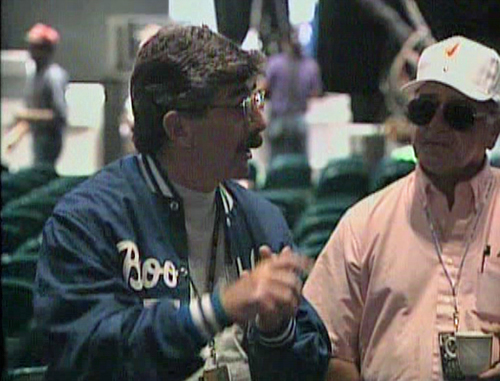
MJI: We're sure you realize we've left the biggest Barbra event till last.
GS: Jason’s Bar Mitzvah?
MJI: (laughing) The Concert! Smith-Hemion recorded Barbra's 1994 New Year's Las Vegas concerts for possible broadcast. There is considerable historical and emotional significance to these performances. Does it become more or less likely that the concerts will be shown on TV or home video as time goes on?
GS: Well, there'd be no point in simply putting out the same material if the only difference is a different venue.
MJI: Barbra performed a longer therapist sequence, with some different songs. She also performed "Since I Fell For You," a real rarity and favorite.
GS: The difference in the therapist segment would be a natural result of editing or adding elements to make it better. I don’t think any artist would put out their earlier version, if they feel they’ve improved the segment.
MJI: For the 1994 Concert TV special, as tentatively planned from the Vegas shows, did Barbra and Dwight basically share directing duties? Tell us a little about the concepts and direction of the show.
GS: Barbra has always, and I mean always, been a director of the TV work she’s done. You know as well as anyone that her involvement is extensive and detailed. Her knowledge of directing, even in the earlier days, was very complete—the look, the cameras, the staging. Once she truly became a director in films, I’m sure she felt equally at ease, even with Dwight, in being quite vocal and insistent with her judgments and opinions. Not always the most tactful in transmitting her thoughts, she has always been so knowledgeable that she’s able to say things in a way that other performers would perhaps not get away with. The concepts of The Concert were almost entirely Barbra’s and the Bergmans’, with input from Marvin Hamlisch. The look of the stage, the placement of the orchestra, the various song segments, the video inserts were almost entirely Barbra’s concepts and execution. I believe, unlike other television endeavors we’ve done together, we were there more to record and edit Barbra’s event, as opposed to the more unified concept approach.
MJI: So, Smith-Hemion executed the television aspects of The Concert, only in Vegas and Anaheim?
GS: Only Vegas and Anaheim were taped. Much of the early discussions had to do with the concern of TV getting in the way of the paying customers. The reason Vegas was never used that much is that the cameras had to be pulled back out of the way, and the lighting was designed for the live event rather than the TV taping. These are formidable differences in the approach to a final product on tape. Anaheim was done for the TV show, with special set-ups and more consideration for television. One of the most significant differences between the two concerts is Barbra’s reliance on the TelePrompTer. Obviously, at the end of the tour, she had become much more familiar with her dialogue and therefore didn’t need to constantly focus on those screens. However, even with her limited experience with prompters, she handled that aspect remarkably well. Mike Myers [aka Linda Richman] was only in Vegas, so that was quite different.
MJI: Did you know that Mike Myers reprised the sketch in New York on July 12th, Barbra’s final show there?
GS: I didn’t know that. There’s probably a whole lot of information you have that I don’t know.
MJI: When did you first see Barbra performing numbers in rehearsal for Vegas?
GS: There were many informal rehearsals at her home, around the piano, but the first formal look was on a sound stage at Sony Studios where the entire Concert was rehearsed with the orchestra, with the film projections and TelePrompTers, etc. That would have been just a week or so before the Vegas opening, probably just before Christmas.
MJI: Were you ever concerned that there wasn't enough rehearsal time?
GS: The concern had more to do with the TelePrompTer, the physical staging and moves the set had to take, the film segments, and all. I never felt that she was under-rehearsed regarding the music. I think Marvin and she were a truly magical union, both creatively and professionally. He’s brilliant and easy to work with. Also, Marilyn especially, although Alan is clearly involved in everything as well, but Marilyn and Barbra spent a good deal of time working on the therapist segment, as well as the other pieces.
MJI: Was Barbra ever interested in having a special guest, like Neil Diamond, on The Concert? You had Barry Gibb at One Voice in 1986.
GS: As you know, Neil has his own very formidable concert schedule. It is very rare on a lengthy concert tour to involve another major artist unless that’s the theme of the tour.
MJI: I was thinking of it just in terms of one night for the audience and TV.
GS: In terms of just TV, this was meant to be an accurate representation basically of Barbra’s tour, not a special one-night-only TV version.
MJI: So Mike Myers was the only guest planned for Vegas, then?
GS: That was more of a New Year’s Eve special surprise. I don’t think we planned that as a TV-motivated item, although his SNL fame was certainly meant to help identify the younger members in the audience and just simply have some fun.
MJI: Did you attend any of Barbra’s early piano sessions at her home, and what were they like?
GS: Yes, quite a few. As always, the rehearsal process with Barbra is extremely professional. There’s a lot of talk analysis and, yes, listening. These are less informal sessions than usually occur at many performers’ homes during the similar process. Of course, Barbra was very busy with other things as well, and we needed to get on with the work. We don’t have a lot of laughs; it gets pretty serious. I remember, speaking of how ready Barbra is to play along with a joke, that when we were sound-dubbing the backyard concert and getting down to the final stages of adding special sounds like crickets, applause, etc., as a joke we put the sound of someone snoring very quietly in a very quiet moment of “Send In The Clowns.” You had to strain to hear it. Barbra wasn’t in the room when we added this sound, so when she returned, we said, “You need to check this mix so we can move on.” “OK,” she said, and we played it back. “What was that?” she said. “What?” we said. “That sound,” she said, “it sounded like a snore.” “We didn’t hear anything, Barbra.” “No! I heard something. Play that back.” We did, and there it was again. She said, “That sound — it’s a snore!” “No, Barbra, we don’t hear anything.” Well, this went on for a while until, I think, Richard Baskin started laughing, and we were exposed. Now here’s the interesting part. Rather than say, “OK, guys, that was funny,” or something like that, she said, “Whose idea was that? I want them to pay for the twenty minutes we’ve been wasting here.” Pretty amazing, huh?
MJI: Did she first think the snoring was really from the live audience, and that only her acute ears could hear it?
GS: Probably, until it started to become obvious that we were pulling her leg.
MJI: But, she does have fun as well with crews on her projects, right?
GS: To be honest, I've not seen an abundance of “fun” on our TV projects. I don’t know about the films.
MJI: My favorite highlight of The Concert is the Yentl medley, which debuted in London to instant acclaim. Can you describe when and how that particular number originated?
GS: Interesting. It was not in the original Concert in Vegas. But, Barbra does listen to people. Just about anyone and everyone said, “Why aren’t you doing anything from Yentl, and she finally acquiesced. There are countless times when Barbra would come into rehearsal when we were in production of many of the shows and say, “I think we should be doing so and so,” and we would later learn that the suggestion might have originated with the doorman, a driver, or just about anyone. It’s not that she was actually suggesting the idea be put into work, more that she simply loves to constantly challenge you, asking questions all the time.
MJI: Do you honestly know whether Barbra will return to the concert stage in the near future?
GS: I think she’s gotten over the fear of performing before large audiences. I believe she had a great experience. There are so many things that interest her, and so many things she does well that what comes next or what the plans are probably depends on how interesting the immediate work is to her and what new challenge is ahead. In the live concert area, the new aspect may simply be in performing the same concert but in an area where no one has seen it.
MJI: When you begin a new project with Barbra, generally what do you expect and look forward to?
GS: Barbra is very difficult to work with, but when I say “difficult,” I simply mean professionally demanding. You really better know what you’re doing. You will be challenged and pushed to the limit of your ability and sometimes your patience. You tend to work for Barbra, as opposed to with Barbra. If that’s your nature, then you’re fine. The important thing is that it’s all worth it. She’s simply that good. If she wasn’t, I don’t think people would be as willing to go through all the tsuris.
END.
Related Links on Barbra-Archives:
[ top of page ]
